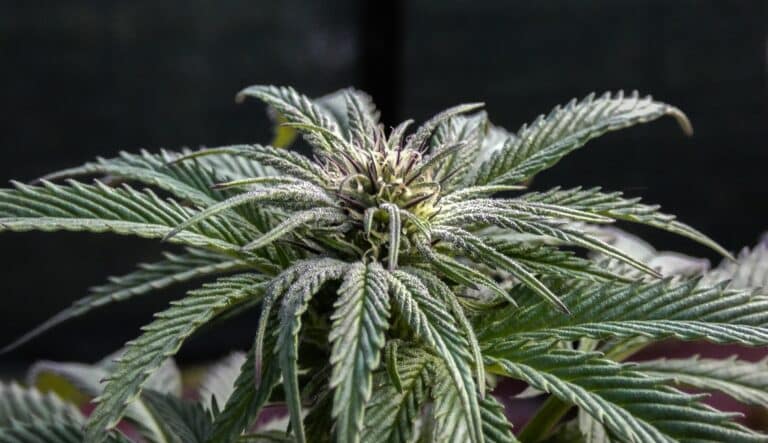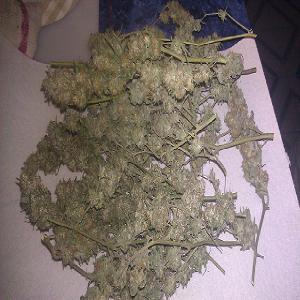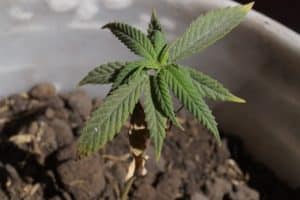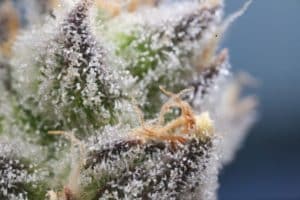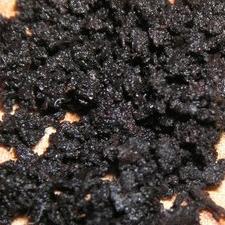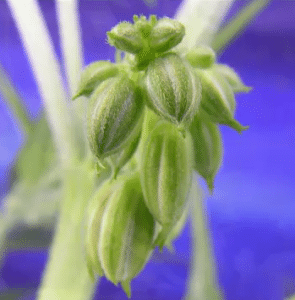 You have probably already heard of “reverse osmosis,” which is the process of changing salt water into fresh water.
You have probably already heard of “reverse osmosis,” which is the process of changing salt water into fresh water.
Osmosis, on the other hand, is the process that retains the tension of the cells, maintains the plant and leaves’ correct positions, allows the buds to remain in ideal condition, and helps take in nutrients. It doesn’t use up any of the plant’s energy.
Osmosis in Weed
Osmosis is primarily responsible for preventing marijuana plants from wilting or lying flat on the ground by retaining the cells’ tension. Osmosis applies not only to plants, but also to many other things in our world.
One such example would be the fact that a liquid with dissolved solids draws pure water. You can see this in action with a demonstration involving two containers of water partitioned by a semi-sealed membrane.
Water can move through between the containers, but solutes are unable to pass. Water will always move to the container with a higher concentration of dissolved solids, thus diluting it. This movement doesn’t need any energy to function, and it won’t stop until there is an equilibrium.
Like vacuoles in the cell, every cell has a semi-permeable membrane as its exterior. These membranes let water through, but most solutes are blocked. Vacuoles function as storage for nutrients, sugars, proteins, and more. Water is attracted to the high concentration of the vacuole, thus swelling the cell as far as the cell wall will allow.
The cell wall keeps the cell from popping by providing a counter pressure. This built up pressure and tension allows the plant to stand upright and its leaves to position themselves according to the light.
Osmosis is also integral in the opening and closing of the stomata, through which the plant “breathes.”
Cannabis Nutrient Absorption by Osmosis
Nutrient absorption (and the absorption of the dissolved salts inside the nutrients), which also involves osmosis, takes place in the cannabis plant’s roots. In this case, osmosis causes substances within one liquid to move to another liquid, through the semi-permeable cell membrane. These substances go from the substance with the greater concentration to the lower concentration. This involves movement of ions or osmotic pressure.
Because of this process, the type and amount of substances on either side of the cell membrane have a high level of importance. Let’s simplify things and say that the liquid (located in the plant and in the water outside) contains nitrogen (N), phosphorus (P), and potassium (K) ions.
Therefore, the type and quantity of the substances that are located on both sides of the cell wall are important. To keep it simple, let’s assume that the liquid in the plant and in the water just outside contains some N (nitrogen), P (phosphor) and K (potassium) ions.
Assuming the cannabis plant has already used some of the nitrogen ions, the plant’s concentration is less than the concentration of the water outside. Because of the principle of osmosis, new nitrogen ions will be attracted to the inside of the plant from outside. When both sides of the cell wall are in equilibrium (meaning the plant has enough potassium ions), then these ions will stay put. However, sometimes phosphorus could be pulled out of the plant and cause a deficit. This occurs when there are more phosphorous ions inside the plant than in the water outside.
Reverse osmosis
Reverse osmosis takes out the dissolved salts in water. This processed can be used in kidney dialysis, in laboratories, and also to partly finish a product that will eventually turn into beer or soda. It can also be applied to growing marijuana plants.
Usually, the ratio of dissolved substances in tap water does not matter for your cannabis plant, even if is present in a high concentration in your area’s tap water (i.e. a large amount of chlorine). Some would like to control exactly what their plant receives, however. If you fit this description, you can begin with demineralized water and add in other nutrients. Keep reading to learn how exactly reverse osmosis works.
A semi-permeable barrier partitions two containers with liquid inside of them. Water flows from the liquid with the higher concentration of solutes to the liquid with a lower concentration. This movement is not unpreventable, however; it can be reversed by putting pressure on the more concentrated liquid. It is possible to figure out how much pressure should be exerted in order to stop the water from passing through the membrane altogether. This pressure can be referred to as osmotic pressure.
If you add even more pressure, you can reverse the flow completely, and water molecules will begin traveling through the membrane and into the less concentrated liquid, thus achieving reverse osmosis.
To put it in terms of “clean” and “dirty water,” your extra pressure on the dirty water makes pure water enter the clean side. This creates even more clean (or demineralized) water, and a liquid or brine with a very high amount of salts in it. Demineralized water has a pH level of 7 and an EC of nearly 0.
Pay attention to a potential lack of calcium or magnesium when watering your plant with demineralized water. You should learn the hardness level of your tap water. It is usually assumed that you’ll water your plants with tap water, and tap water always contains high concentrations of calcium and magnesium. It is important to note that reverse osmosis removes these minerals from the water.
Turgor and Plasmolysis
The pressure that is exerted on a cell wall when that cell is under tension is called turgor. The cell’s capacity for drawing water from nearby cells or spaces between cells is what causes turgor. As the pressure increases, the cell membrane stretches and expands until it touches the cell wall. The cell wall creates a counter pressure, like a box that has a counter pressure on a balloon inside as it is being blown up.
Plants’ stiffness is caused by turgor. Turgor lowers when cells lose water (i.e. when the osmotic value of the surrounding environment is greater). When turgor gets too low, the cell membrane breaks off from the cell wall (plasmolysis). The cell dies after remaining in plasmolysis for too long.









